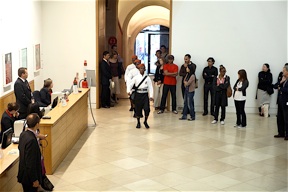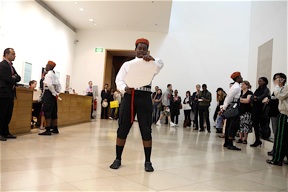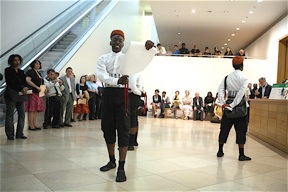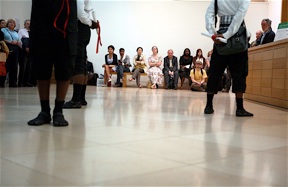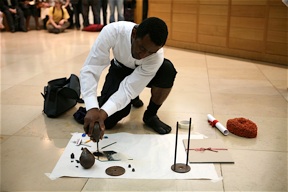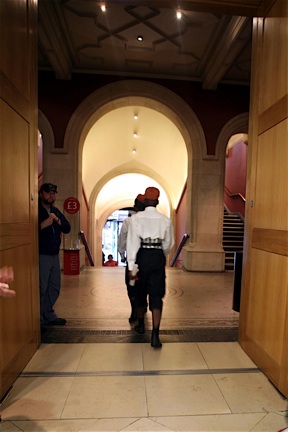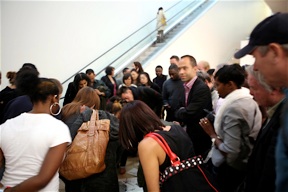Victoria
It was a perfect place to start. The point of departure for an exploration of memory and history with Queen Victoria at its core was a Victorian Institution, the National Portrait Gallery. Victorian idealism founded the museum in the mid 19th century and a generation later the Queen’s imperial image was etched into the minds of her colonial subjects, fixed in a million portraits, many of which hang still in the wood-panelled galleries not far from where Leo Asemota’s performance unfolds.
One of these portraits, rarely displayed, usually sits in the Gallery’s archive, a photographic copy of a painting, it shows Victoria seated on a mediaeval throne, dressed in flowing ermine robes, clasping a scroll in her right hand. The picture is a Victorian glass plate negative by Alexander Bassano of a portrait by 19th century French Orientalist painter Jean-Joseph Benjamin-Constant. It is not just the features and pose of the aging monarch that make her instantly recognisable, it is the air of moral certitude and historical authority that can be found in the icons of English rulers over centuries, a conviction that lingers even today in the power bases of this country’s monarchy and parliament.
In ens memoralis, Leo Asemota’s ritual transformation of a print of this image is in part an attack on the values, then and now, that produced this portrait. It is a live artwork that unfolds to become a profound meditation on the portrait as a signifier of history, memory and cultural identity.
